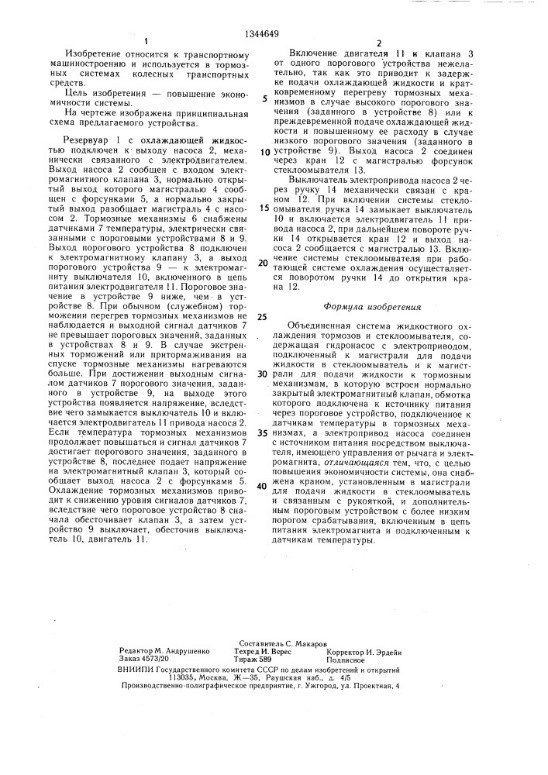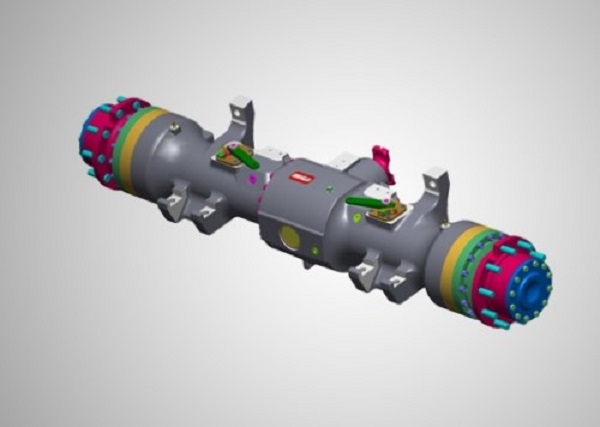Liquid brake cooling system

In normal operation, the car brake temperature is rare when it exceeds 200 C. On the race track, the brakes can heat up to temperatures above 500 C.
(average data that depends on the class of the car and driving conditions)
So it happened in the auto industry that the air cooling system lost liquid in the issue of engine cooling. The high efficiency of the "water" cooling here played a significant role.
It would seem that the same process should have happened with the cooling of the brakes? Especially since it was about traffic safety, which you agree is more important than the possibility of the movement itself.
But such a transformation in the brake system of the car did not happen. More precisely, in mass order, the liquid cooling of the brakes was not used, but there were interesting designs.
For example, the company Brembo puts on some rally car calipers with liquid cooling.

Such calipers are used in the stages of rally on asphalt.
Traffic conditions on asphalt at races require immaculate driving with minimal correction of the trajectory of movement. In fact, it turns out that during the asphalt phases, periods of “rest” of the brakes are combined with sharp braking of high intensity (with high braking torque). Therefore, liquid cooling gives the maximum effect under these conditions - the temperature decreases by 80-100 degrees, which increases the thermal efficiency by 45%, in comparison with air cooling systems.
The use of liquid cooling in sports was not limited. According to the principle of liquid cooling, the concept of a brake for trucks from Professor V. Selifonov and Cand.Tech.Sci. N. Vladimirov was developed and tested.
It is known that the greater the mass of the car with the load, the more difficult it is to develop brakes for it. The main reason is a large amount of heat that must be dissipated, so the friction surface should be large, but at the same time be placed in the wheel. The brake surface of the disc brakes is always less than the drum counterparts. Working conditions are also fundamentally different. High temperature loads cause deformation and destruction of disc brakes, unlike drum, and that is why trucks and buses rarely use disc brakes.
The problem of adapting disc brakes to heavy trucks and buses was attempted at the Moscow State Academy of Automobile and Tractor Engineering, at the Automobiles Department. A fundamentally new, non-standard solution to the problem was found - disc brakes with a liquid cooling system.
The essence of the design is that the friction material is now not on the block, but on the disk. In a block made of cast iron, fluid channels are made, which are connected to the cooling system by fittings.
In a conventional disc brake, the maximum temperature of a friction pair is 600–800 ° C, and the contact area of the parts is small, so heat resistant and durable materials are required.
In the new design, this area is larger, and the temperature does not exceed 200-250 ° C. Requirements for materials are reduced, and wear becomes less.
The prototype was tested in the laboratory of the Academy and tested at the NIIATI stand (Yaroslavl). Studies have confirmed the calculations. The cyclic deceleration mode did not cause any large temperature jumps and confirmed the theory.
Finally, it is worth mentioning the Daimler water cooling patent.

The system works both for heating and cooling ... tires of the car. The system consists of water in a special tank, sensors that fix the temperature of the rubber, and three nozzles. Depending on driving conditions and other factors, water is sprayed with both cold and hot water (anti-icing of tires). Replenishment of water is possible due to the collection of rainwater falling on the car.
The idea of cooling by spraying water from the nozzles, and using water from the washer was also in the patent of the USSR.


But at the moment the idea of liquid cooling has advanced not only on rally cars, but also on specials. Transport, which, it would seem, does not have a high speed of movement.

Liquid-cooled disc brakes are sometimes used now on Yale loaders with a lifting capacity of 5 to 5.5 tons.
PS: Installing a system of liquid cooling brakes on the car can have a number of related advantages for the future. In the next article, I will look at specific, and possibly unexpected options for using such a cooling method on electric vehicles and hybrids.
